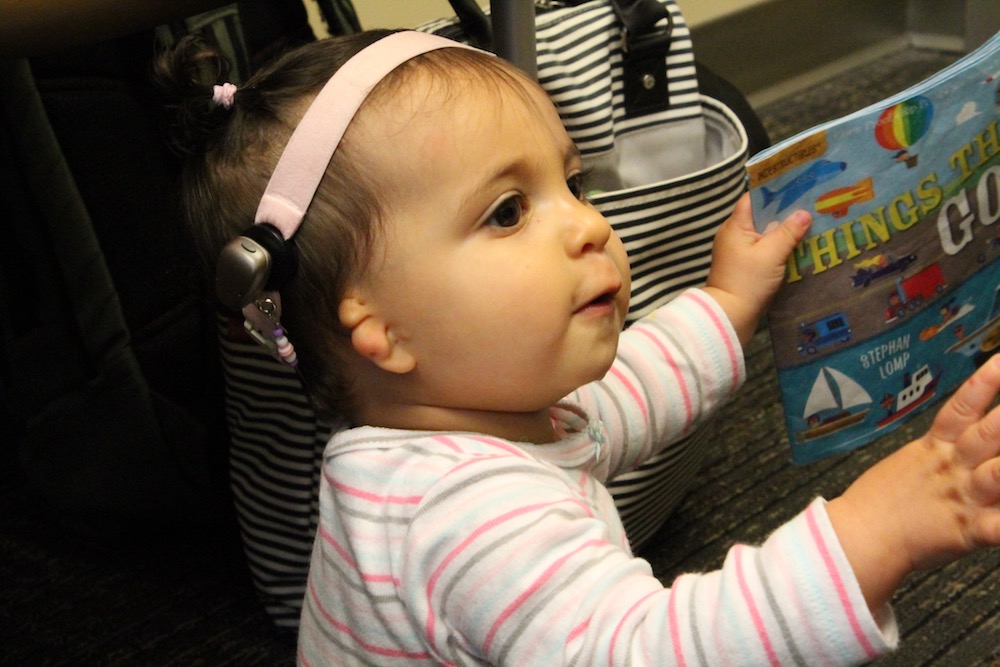Hearing Aid Technology
A hearing aid receives sound through a microphone, which converts the sound waves into electrical signals and sends them to an amplifier. The amplifier increases the power of the signals and sends them to the ear through a receiver (speaker). Though today’s hearing aids have these three basic parts, they are supported by sophisticated sound processing features, making them into tiny but powerful computers!
A hearing aid is programmed specifically for an individual’s hearing loss. There is no one-size-fits-all hearing aid. It takes careful adjustment by an audiologist to ensure a correct fit.
Behind-the-ear hearing aids (BTEs)
BTEs can be used with most permanent hearing losses.The electronic components of the hearing aid sit behind the ear and an attachment called an earmold sits in the ear canal and bowl of the ear.BTEs come in different sizes depending on functionality or power of amplification required for the individual.BTEs are the most common hearing aids used for children due to their versatility and ability to change with the growing ear.

Receiver-in-the-ear (RITE) or Receiver-in-the-canal (RIC) hearing aids
RITE hearing aids resemble BTE hearing aids in that they have electronic components that sit behind the ear.However, RITEs are typically smaller and the receiver, or speaker, sits in the ear canal encased in a custom earmold or plastic dome.RITEs are best for high-frequency hearing losses.This device can be used in older children or adults.
Contralateral routing of signal (CROS) or bilateral microphones with contralateral routing of signal (BiCROS) amplification systems
This hearing system is typically used in unilateral or asymmetrical hearing losses where one of the ears will not benefit from traditional amplification of sound.Both ears will be wearing a device.In these cases, rather than amplifying sound to the ear with no usable hearing, we capture sound from that side of the head and wirelessly transmit it to the better hearing ear.
For example, if a patient has no usable hearing on the right ear, the device that sits on the right ear will collect sound through its microphones and send the sound to the device sitting on the left ear.If the left ear had hearing loss, that sound would be amplified before its output into the ear canal.Note that the left ear is the only one actually hearing sound, but this patient wearing a CROS will have better access to sounds from the right side.
Bone conduction hearing devices
Bone conduction hearing devices are typically indicated for individuals with chronic conductive or mixed hearing loss. Those with single sided deafness can also benefit. Bone conduction devices bypass the outer and middle ear by sending vibrations from the device to the inner ear. They can be worn 3 different ways: via headband, via magnet (requires surgery), via abutment (requires surgery).

Lyric
Lyric is an extended wear hearing device that is inserted completely in the ear canal using a microscope. Unlike many other hearing aids, Lyric is positioned completely inside the ear canal so that it provides natural sound quality while staying out of sight. The Lyric is worn all day, everyday. You will sleep and shower with devices, however, swimming is not recommended. Lyric is designed to fit patients with a mild to moderately-severe hearing loss. A UCSF Lyric-trained audiologist can assess the level of your hearing loss, ear size and shape, medical conditions, and lifestyle to determine if Lyric is the right choice for your hearing needs. As a result both ear and medical related restrictions, it is important to realize that the Lyric can successfully be fit into only approximately 40-50% of adult ear canals.
The life expectancy of each Lyric ranges from approximately 2 to 4 months. When the aid(s) stop working, you will return to UCSF to be fit with a new device. It is likely you will need to return three to six times a year for replacement of Lyric devices. You also will be able to use a small tool if you need to remove the device yourself. You will NOT be able to reinsert the Lyric once removed. Because the Lyric hearing aids are replaced several times per year, they are dispensed on an annual subscription basis. Insurance will not be billed for the Lyric by UCSF.
Cochlear Implants
A cochlear implant is an electronic device that delivers sound via electric impulses to the cochlea. It is surgically implanted by an otolaryngologist, and programmed by an audiologist. Although a cochlear implant does not cure hearing loss, it can allow a person to hear and understand more speech than was possible with a hearing aid.
